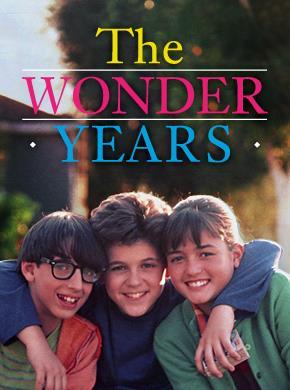NAGC works to support those who enhance the growth and development of gifted and talented children through education, advocacy, community building, and research

It started and ended with a kiss. In between, more than 100 episodes of The Wonder Years aired on ABC from 1988 to 1993. It still remains high on my list of favorites. My friends and I were about the same age as the main characters and the show had a big impact on us as we moved through our teenage years. As I reflect on the show, I realize that we learned so much from the trials and tribulations of Kevin, Winnie, Paul, and their extended families and friends. Just think of the effect it could have on the young students encountered in today’s classrooms.
In the time spent over 15 years as a middle school educator, I had many conversations with a colleague of mine, Anne Ejnes, on the topic of using The Wonder Years television show as a basis for social and emotional small group discussions. In that time, I have presented and worked with the technique known as Cinematherapy, a medium that allows the viewers of a film to vicariously experience situations and resolutions in a secure, safe way. I summarize the process as simply, “seeing yourself in someone else.”
I was first made aware of Cinematherapy through a paper entitled Fostering the Social and Emotional Development of Gifted Children Through the Guided Viewing Of Film by Thomas Hébert and Kristie Speirs Neumeister. It changed my perspective on young adolescents greatly, and I highly recommend checking it out. You can access a PowerPoint of my presentation more detailed look at the practice, “Cinematherapy and the Implications for Social and Emotional Development,” which focuses on the use of two young-adult films, Stand By Me and Explorers.
Until recently, The Wonder Years was not available on DVD, Video, syndication, or the Internet. Recently, Netflix began offering the entire series of the show through its streaming service. It is clear that each 30-minute episode could be used as a starting point for a host of discussions and activities. I invite you to collaborate in the development of an episode guide that could be used with students.
Here’s how:
Visit Netflix and search for The Wonder Years. You can scroll through and read a synopsis of each episode or visit an annotated episode list online. Choose a specific episode to watch and take note of the title and episode number. Watch the episode once through to get a feel for the theme, and jot down any specific lines or dialogue. Watch the episode again and be ready to list any discussion questions you might ask of a group of your students (You will find examples in my PowerPoint).
I have found it helpful to watch the episode and pause it when I find a line or section of dialogue that I can use as a prompt for a larger discussion. It is also a good idea to mix specific questions about the characters first and then have the students relate it to their own experience. Organizing these by subject matter and/or theme helps greatly. Then, develop and write a guide that lists at least four activities that will assist in the student’s understanding. Here are some of my favorite go-to activities.
When you are finished, please share your guide with me (jdanielian@nagc.org). Be sure to include your name, contact information, and The Wonder Years in the subject line.
Just as I, an adolescent in 1988, vicariously experienced life in the late 1960’s and came to understand my place in the oftentimes hectic and misunderstood teen years, so too can students today. I’m looking forward to your great ideas.